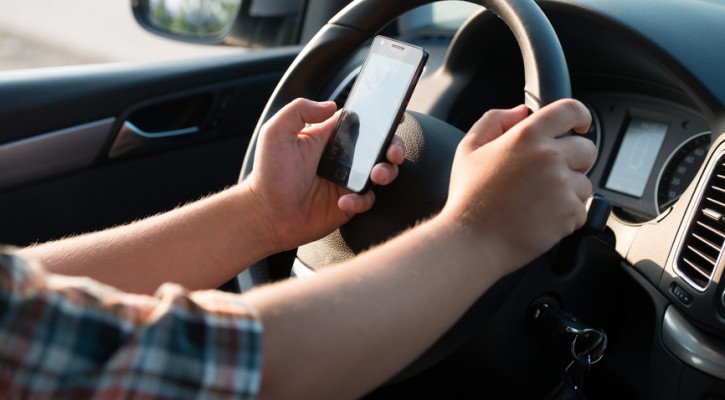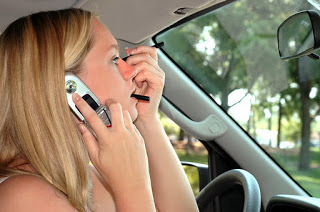Category Archive: Safe Driving

Teens Educate Teens On Safer Driving
March 14, 2007
Making sure your teenage driver is aware of the dangers of drinking and driving is always a first priority when preparing them to take to the roads. However, many parents and educators forget to stress the importance of driving without distractions. While drunk driving causes many accidents each year, just as many accidents and deaths are caused by teenage drivers who are distracted by cell phones, radios, and conversations with their passengers. All of these accidents could have been easily prevented.
State Farm has teamed up with a group of students in an Algonquin, Illinois high school to educate teenage drivers on the dangers of driving while distracted. Backed by a grant of $92,000 from State Farm Auto Insurance, this student group has started a program called “In the Blink of an Eye.” The group of students involved as come up with various strategies to help educate fellow students throughout the area about the importance of seatbelt use and the dangers of distracted driving.
Students have set up parking lot checks to remind their peers to buckle up and turn off their cell phones while driving. They have also put together presentations about safe teenage driving, including a safety education night for students currently enrolled in driver education classes. This offers both students and parents a chance to learn more about the effects of distracted driving, making the program a community wide effort. With a successful program established in their own school, they are about to take their message on the road.
Coming in April 2008, there will be a conference for schools in Illinois, Indiana, Michigan, and Wisconsin, giving other students and educators the information and ideas needed to set up a similar program in their own schools. The conference will be free to any schools within these states. State Farm and the creators of “In the Blink of an Eye” hope to spread the message about safer teen driving and reduce the number of fatalities among teenage drivers.

National Teen Driver Survey Highlights Distractions on the Road
February 15, 2007
It has been said time and again, that inexperience is the number one reason teen drivers and their passengers are at risk of injury or death as a result of car accidents. A combination of immaturity, inexperience, and indifference all add to the problem. Teen drivers haven’t had the opportunity to learn which distractions are dangerous when behind the wheel, and the consequences of letting those get in the way of safe driving.
When the community understands why teen drivers act the way they do behind the wheel, educating them becomes a whole lot more productive. Therefore, studies are done nationwide to determine the safe and risky habits of teen drivers and their passengers.
One such study, sponsored by Children’s Hospital of Philadelphia and State Farm Insurance Company, asked teens what actions performed during driving were unsafe. You might be surprised by some of their answers.
According to the National Teen Driver Survey, which gathered scientific data on more than 5,600 high school students, teens reported seeing the following distractions taking place at least some of the time:
- 93% said they see peers riding with teenage driver, who are often singing, bouncing in their seat or acting wild.
- 92% reported seeing teen drivers speeding.
- 85% reported loud music from cars of teen drivers.
- 79% said they see teens sing and even dance while driving.
- 76% said they see teens drive while struggling with negative emotions, such as failing grades or relationships.
- 53% said they see teens using hand held games and listening devices or sending text messages while driving.
- 38% said they have seen teens drive after smoking marijuana.
With distractions such as singing, dancing, or dealing with life’s problems, it’s easy to see why auto accidents are the leading cause of deaths for teen drivers. We all know how hard it is to drive while just changing the radio station, let alone holding and pushing buttons on a cell phone or mp3 player. Teen drivers need to know these distractions can be deadly, and hopefully this study combined with quality driver education classes will bring this issue to light.

Teen Driving Video an Eye-Opener for Parents
February 13, 2007
I just watched a video on Drivers Ed Direct, courtesy of Geico, that shows teens driving with hidden cameras and no scripts. As a teen, I shouldn’t be surprised, but I’m sure a few parents will be when they see it.
The video follows four teens over the period of a few days, as they prepare for their homecoming game and prom. They’re interviewed candidly about their views on teen driving, wearing seatbelts, and speeding. The teens driving history ranges from 1 to 24 months of behind the wheel experience, and it is quite obvious that most states need graduated licensing laws, which make teens put more hours behind the wheel before being licensed.
All but one of these teens claim to be decent drivers, and while all voice concern over the lives of themselves and their passengers, their actions do not back up their words.
- Jesse admitted that at intersections, she will only “roll through” if there are no other cars. Hidden cameras caught her failing to stop at 5 stop signs during the same trip across town.
- Hidden cameras caught all teens either talking on their cell phone, high-fiving their back seat passengers, looking back at passengers, or gesturing to the point of having both hands off the wheel.
- One driver admitted she did not have a special policy about passengers wearing seat belts, and in fact, a hidden camera showed her driving around with her passenger unbelted.
- One driver admitted some of his friends did not want to ride with him. A hidden camera showed another driver’s passenger getting freaked out by the driver’s risky behavior (speeding).
- Both male drivers admitted to being aggressive drivers and engaging in road rage behaviors.
The video, which can be found on www.driverseddirect.com, ends with some scary statistics.
- 2/3 of teen passenger deaths occur while a teen is driving
- more than 1/3 of teen crashes are speed-related (2,150 each year)
- 74,000 young people die or are injured each year by not wearing a seat belt
- during their 1st year of driving, 1 out of 5 16-year-olds will have an accident
- there were 1,825,000 young people in accidents last year – 5,900 of them died
Parents beware. When your teen tells you he or she is a good driver, put your faith in them, but do frequent ride-alongs with them to evaluate their ongoing progress. Teens can always learn more about safe driving and the rules of the road with this online DMV test that contains hundreds of questions and answers from the Driver’s License manuals.
Stiffer Penalties for Reckless Teen Driving
February 6, 2007
Former Massachusetts Governor Mitt Romney gave a gift to Marion Emslie earlier this month, just before leaving office. Emslie’s daughter, Talia, was killed when she was 15, while she was a passenger in a car that ended up in a high-speed chase. Local government was uninterested in discussing factors that led to Talia’s death, and it became something that wasn’t talked about. However, Talia’s mom continued to fight on her behalf for stronger penalties for teen drivers who engage in risky behavior behind the wheel.
Emslie noted in a news article that come prom time, schools talk to their students about driver education 101 topics such as the dangers of drinking and driving, and about the importance of wearing a seatbelt, but the make no mention of speeding. Though Massachusetts enacted graduated licensing laws in 1998, Emslie felt more enforcement and education was needed to save lives.
The bill signed by Romney requires teen drivers with a learners permit to log more hours behind the wheel, and adds stiffer penalties for reckless driving, including speeding and drag racing. Emslie links speeding with the number one cause of teen deaths in auto accidents. Among the penalties outlined in the new legislation include: a 90-day permit suspension for speeders, a $50 fine, and an additional fine of $10 for every mile the teen driver is over the speed limit. These hefty fines will certainly make teens think twice before driving recklessly. In addition, if the teen driver is caught a second time, they would face suspension for one year, as well as an additional fine.
Emslie is not sure yet if the bill will save lives, though she is positive it will have an impact on how teen drive. She is also no doubt happy that she has been able to get the government to finally accept that more needed to be done to protect Massachusetts’ teen drivers. For Thalia, the laws come a little too late, though her peers now have a better chance at survival.
Photo: Associated Press
Emergency Maneuvers Driving Course a Good Option for Teen Drivers
January 30, 2007
Teen drivers must pass a driver’s education course and behind the wheel training before they get their license. However, what prepares them for emergency situations once they begin driving on their own? This would be one of those times when learning by experience is not the best or safest idea. Unfortunately, chances are unless you and your teen live in an area with adverse weather, they will not get a chance to practice emergency situations until it is too late.
Now there are many new driver prep course options for parents and teen drivers who wish to be fully prepared when behind the wheel. Many cities are offering emergency maneuvers driving courses, usually at a fairly reasonable cost, that teach teens how to handle emergencies while on the road. Among the types of lessons learned, teen drivers will learn things such as how to steer out of a skid and avoiding overcorrecting when swerving to miss something or someone in the road.
It is hard to prepare teen drivers for emergencies, as experience really is the greatest teacher. Fortunately now parents can enroll their teens in these new programs for greater confidence on the road. A few such programs are the Street Survival and Driver’s Edge programs. Street Survival is sponsored by the BMW Car Club of America Foundation, and is staffed with automobile lovers and high-performance driving instructors. Because the teachers are volunteer, the courses are offered at an affordable rate ($60 for parent and teen, including breakfast and lunch).
Driver’s Edge is sponsored by Bridgestone, which is offered in a dozen cities for free. More and more these types of programs are becoming available. Though they are voluntary and not required for a teen to be licensed, parents will find the costs are worth the added confidence their teen drivers will have while driving.
While some insurance companies are offering discounts to safe drivers and those with a higher grade point average, most do not yet offer a discount for completion of an emergency maneuvers driver education course. There is still a misconception that the added confidence will add to more risky driving by the teens behind the wheel. Only time and statistics will tell if these programs are effective against the onslaught of teenage driving deaths. Until then, I recommend all concerned parents have their teens enroll in such a program, or at the very least teach their child the basics themselves.
